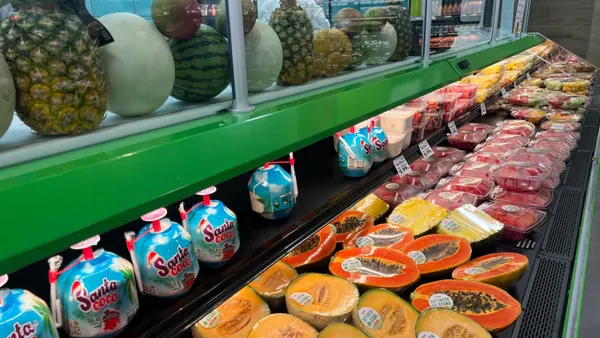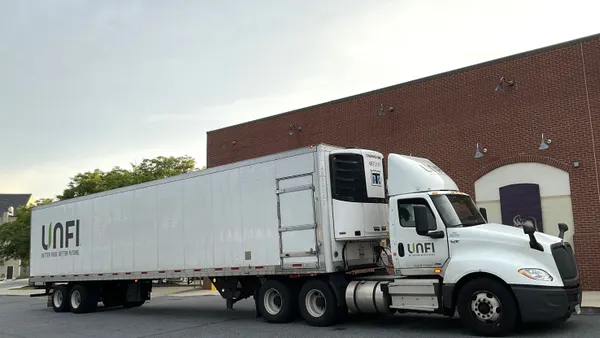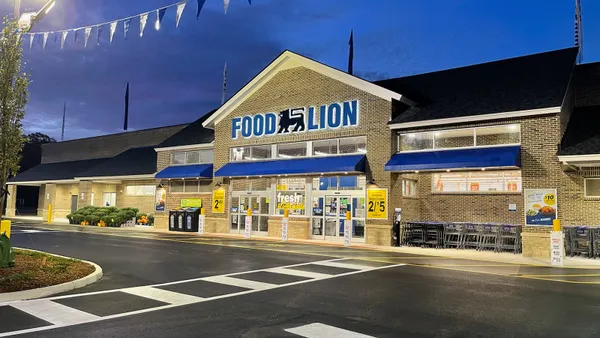Though many retailers closed their doors during the pandemic, grocery stores flung theirs wide open. As essential businesses, grocery stores were tasked with providing the population with food as the nation battled COVID-19. Unexpected supply chain disruptions left many grocers with bare shelves, frustrated customers and a sudden shortage of critical frontline staff.
Stater Bros. Markets, a grocery chain operating 170 supermarkets with 18,000 employees across seven California counties, quickly recognized the need to pursue digital transformation as a means to avoid future challenges like those faced during the pandemic.
The Road to Smarter Talent Management
Like other grocery sellers around the United States, Stater Bros. found their existing technology solutions tested as COVID-19 began to spread. Constantly shifting health guidelines from the Centers for Disease Control (CDC), California Department of Public Health and local governments required the retailer to communicate rapidly changing policies across its workforce.
"Everything was moving quickly in the grocery space," said Gil Salazar, senior vice president of information technology for Stater Bros. Markets. "We've got 18,000 team members across the company and our biggest challenge was our ability to connect and communicate with them."
The legacy system used by Stater Bros. wasn't built to handle the workforce challenges generated by a global pandemic. The existing technology lacked the proper functionality to track COVID-19 infections among employees and manage related leaves of absence associated with mandatory quarantine periods. It also hindered the company's efforts to rapidly hire new team members.
"Other industries were crippled by the pandemic, while demand for our products grew significantly," Salazar said. "We had to go through a pretty rapid hiring and onboarding process, and our current systems didn't facilitate an easy transition. At the height of the pandemic, we ramped up hiring to about 3,000 additional teammates. That created significant stress on our existing resources to do the majority of that in a manual way."
Though the company got the job done with its existing systems, the Stater Bros. leadership expedited a search for a new Human Capital Management System (HCMS) that would help them better manage their employee base in the future.
"We established enough confidence in our foundational systems to take a step back and focus on what the pandemic did and how we should respond as a business," said Salazar. "We unanimously agreed as a leadership team that our number one focus should be replacing our foundational HCMS. It became obvious we needed to do something dramatically different."
After an exhaustive RFP process that included input from across the Stater Bros. organization, the retailer awarded SAP's SuccessFactors talent management solution as its new HCMS solution. SuccessFactors was selected for its organized structure, granular capabilities and ability to streamline a transition from existing legacy technology.
"Within the SAP SuccessFactors platform, everything is at our fingertips," said Salazar. "We have full 360-degree contributions from all angles of our business. The foundational organization chart was appealing to the HR team; retail evaluated how different capabilities would impact the employees out in the stores; the distribution and warehouse leaders explored how they could create advantages for their teams through the platform; public relations focused on the ability to connect and communicate with all teammates in stores and the distribution center. We collectively came together and recognized that SAP's capabilities led in these areas."
Building Better Supply Chain Agility
The digital transformation at Stater Bros. Markets didn't stop at talent management. Prior to the pandemic, the grocery chain had already initiated a sourcing process for a new enterprise resource planning (ERP) solution. COVID-19 put that search on hold, but the need for a new ERP became clear as the company managed a volatile supply chain.
Stater Bros. has 12 major systems focused on moving products to stores, supply chain replenishment and customer delivery. The existing legacy mainframe and associated solutions perform these functions in batch processes, offering little in terms of useful data or real-time supply chain management capabilities.
"We have to be in a position to make rapid decisions, especially when you think about the challenges the pandemic presented. We were faced with stockout situations where our suppliers weren't able to deliver in a timely manner. They were actually eliminating SKUs to focus on products they could move quickly. We were challenged in our ability to maneuver, adapt and respond to the changing market," Salazar said.
While most of these challenges weren't new, they were definitely exacerbated by the pandemic. Stater Bros. had already planned to change the way it aggregated, batched and processed data. Like other companies using legacy systems, Stater Bros. found its foundational system had become difficult to maintain due to a lack of skilled COBOL programmers who could understand, support and modify it. As with their HCMS solution, they turned to SAP after a similar RFP and evaluation process.
"SAP was a clear winner for us for its ability to solve the majority of our business needs and help us become a more responsive and data-driven company," Salazar said. "Today we spend 80 percent of our time wrangling the data and 20 percent making business decisions on the data. We're really trying to reverse that and get to a point where it takes us 20 percent to wrangle the data and 80 percent consuming the data and making critical business decisions. We feel like we're in a good position to actually do that by leveraging SAP's capabilities."
Given the purchase of Whole Foods by Amazon, recent news of technology investments by Kroger and similar grocery industry news in recent years, the leadership at Stater Bros. recognized the need for an ERP that would empower data-driven business decisions. As more grocery retailers strive to recover from the pandemic and pursue organization-wide agility and resiliency, digital transformation efforts will undoubtedly accelerate in the grocery space.










